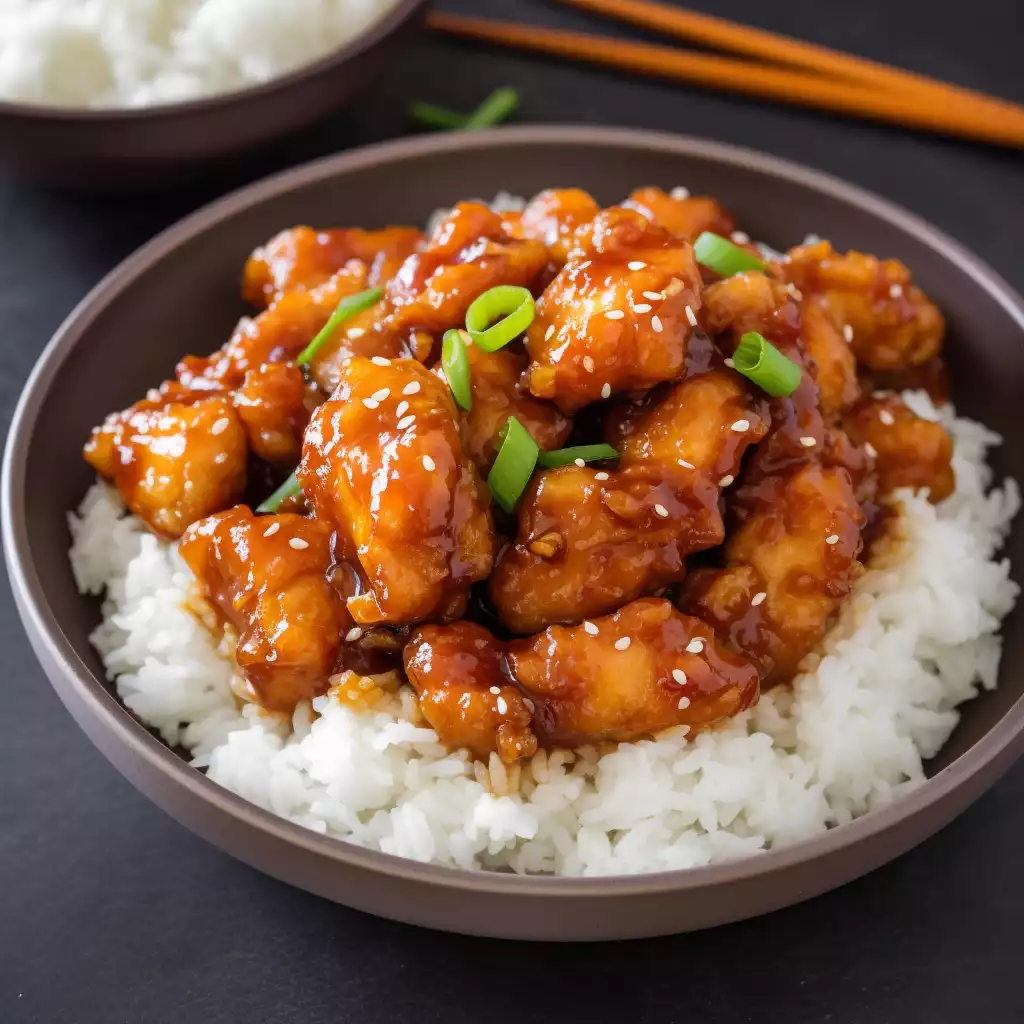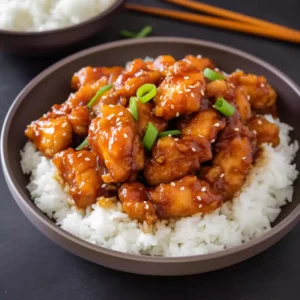
General Tso’s Chicken is a classic dish that originated in Chinese-American cuisine, known for its bold flavors and crispy texture.
This dish, named after the famous Qing dynasty military leader, General Tso Tsung-tang, offers a delightful combination of savory, sweet, and spicy tastes that make it a favorite on many restaurant menus.
Despite its popularity, General Tso’s Chicken carries a mystique surrounding its true origins, with various tales attributing its creation to different chefs. However, what remains consistent is its deliciousness and the joy it brings to those who taste it.
While it may seem daunting to recreate this dish at home, fear not! With the right ingredients and a step-by-step guide, you can whip up your own batch of General Tso’s Chicken in no time.
This recipe strikes a perfect balance between crispy chicken bites and a flavorful, glossy sauce, making it an impressive dish for any occasion.
Expert Tip: For an extra flavorful sauce, marinate the chicken pieces in a mixture of soy sauce, ginger, and garlic before coating them in cornflour.
Chicken Boneless: Chicken provides the protein base for this dish, offering a tender texture that pairs perfectly with the crispy coating and flavorful sauce.
Cornflour: Used to coat the chicken, cornflour creates a crispy exterior when fried, giving the dish its signature crunch.
Salt and Black Pepper: These seasonings add depth of flavor to the chicken, enhancing its taste and complementing the other ingredients in the dish.
Garlic and Ginger: Minced garlic and ginger infuse the dish with aromatic flavors, adding a punch of freshness and complexity.
Spring Onions: Chopped spring onions serve as a vibrant garnish, adding a pop of color and a hint of onion flavor to the finished dish.
Sesame Seeds: These tiny seeds provide a nutty aroma and a subtle crunch, enhancing both the flavor and texture of the dish.
Dried Red Chillies: Adding heat and color, dried red chilies contribute a spicy kick to the sauce, balancing the dish’s sweetness.
Oil: Used for frying the chicken and sautéing the aromatics, oil helps achieve crispy chicken and prevents sticking.
Expert Tip: To achieve restaurant-quality crispiness, fry the chicken in small batches and drain excess oil on paper towels before tossing them in the sauce.
General Tso’s Chicken pairs beautifully with steamed rice or noodles, providing a satisfying base to soak up the flavorful sauce. For a complete meal, consider serving it alongside stir-fried vegetables or a crisp, refreshing salad. To elevate the dining experience, garnish the dish with additional chopped spring onions and sesame seeds for a burst of freshness and visual appeal.
Expert Tip: Customize the level of spiciness by adjusting the amount of dried red chilies used in the sauce, or by adding a dash of chili flakes for an extra kick.
Yes, you can substitute chicken breast for chicken thighs if you prefer leaner meat. However, keep in mind that chicken breast may cook faster and can become dry if overcooked.
Dried red chilies add heat and depth of flavor to the dish, but you can adjust the amount or omit them altogether to suit your taste preferences.
To reduce the spiciness of General Tso’s Chicken, you can decrease the amount of dried red chilies used in the recipe or remove the seeds before adding them to the dish.
While General Tso’s Chicken is best enjoyed fresh, you can prepare the components ahead of time and assemble them just before serving. Store the fried chicken and sauce separately in airtight containers in the refrigerator, then reheat and combine them when ready to eat.
For extra crispy chicken, ensure that the oil is hot enough before frying and avoid overcrowding the pan. Fry the chicken in batches, allowing each piece enough space to crisp up evenly.
Here are some more recipes for you to enjoy! If you my recipes don’t forget to rate and leave a comment.
If you have any recipe suggestions, please do not hesitate to ask me. A great way to stay in contact with me is through Instagram, Facebook, Twitter and YouTube. Don’t forget to tag me @CookwithNabeela in your recipe photos!

Subscribe now to receive my latest recipes directly in your inbox. Stay up-to-date and never miss out!

I love to cook! I want to share with you my favourite, delicious family-friendly recipes. I want to inspire you to create fantastic food for your family every day.
Add your first comment to this post